IOCB covers 2019
Here are some of the front/back/inside covers created to accompany and illustrate the scientific articles authored by IOCB researchers and published in 2019.
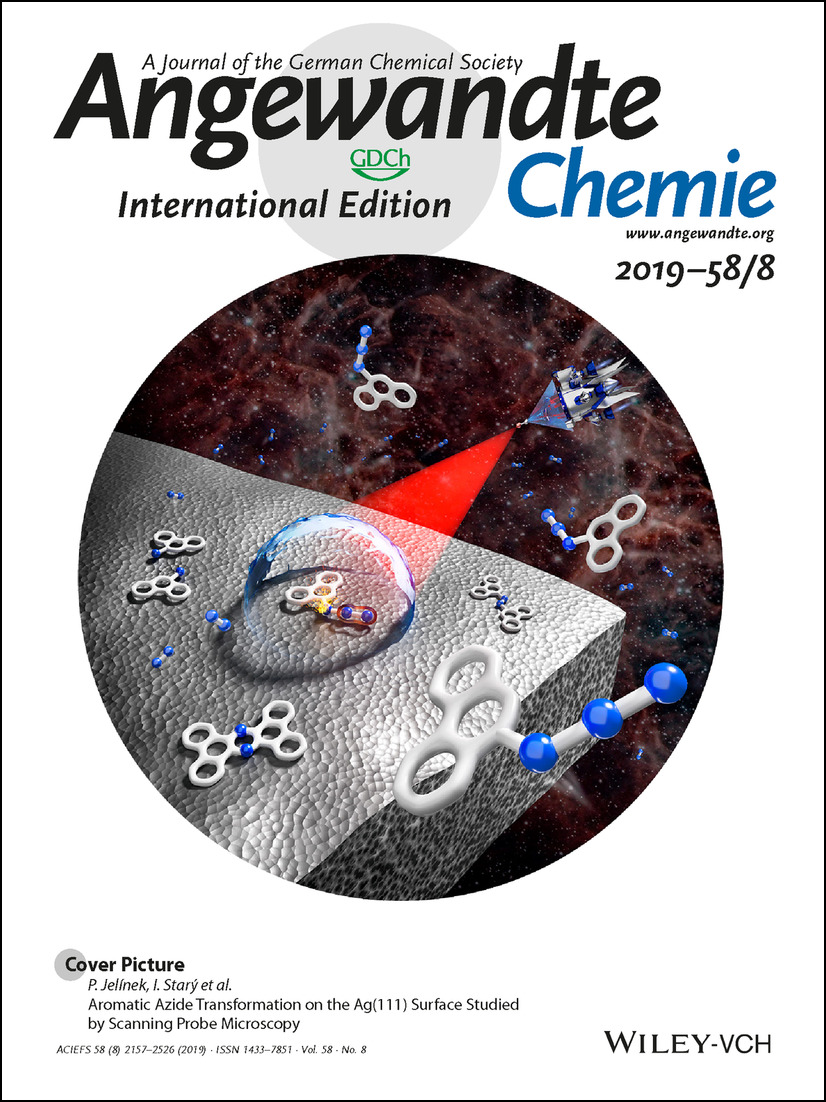
Aromatic azide transformation on the Ag(111) surface studied by scanning probe microscopy
Transformation of aromatic azides on the silver surface was studied by atomic force microscopy in ultrahigh vacuum. In their Communication on page 2266, P. Jelínek, I. Starý et al. show that 9-azidophenanthrene decomposes into an elusive nitrenoid intermediate chemisorbed on the surface. It undergoes a formal nitrene insertion into a C−H bond, dimerisation, or hydrogenation to form covalent σ- and π-bonds in the dimeric or reduced products of the on-surface reactions. (Cover art: Tomáš Belloň / IOCB Prague)
- Article: Hellerstedt, J.; Cahlík, A.; Stetsovych, O.; Švec, M.; Shimizu, T. K.; Mutombo, P.; Klívar, J.; Stará, I. G.; Jelínek, P.; Starý, I. Aromatic Azide Transformation on the Ag(111) Surface Studied by Scanning Probe Microscopy. Angew. Chem. Int. Ed. 2019, 58, 2266-2271. https://doi.org/10.1002/anie.201812334
- Cover
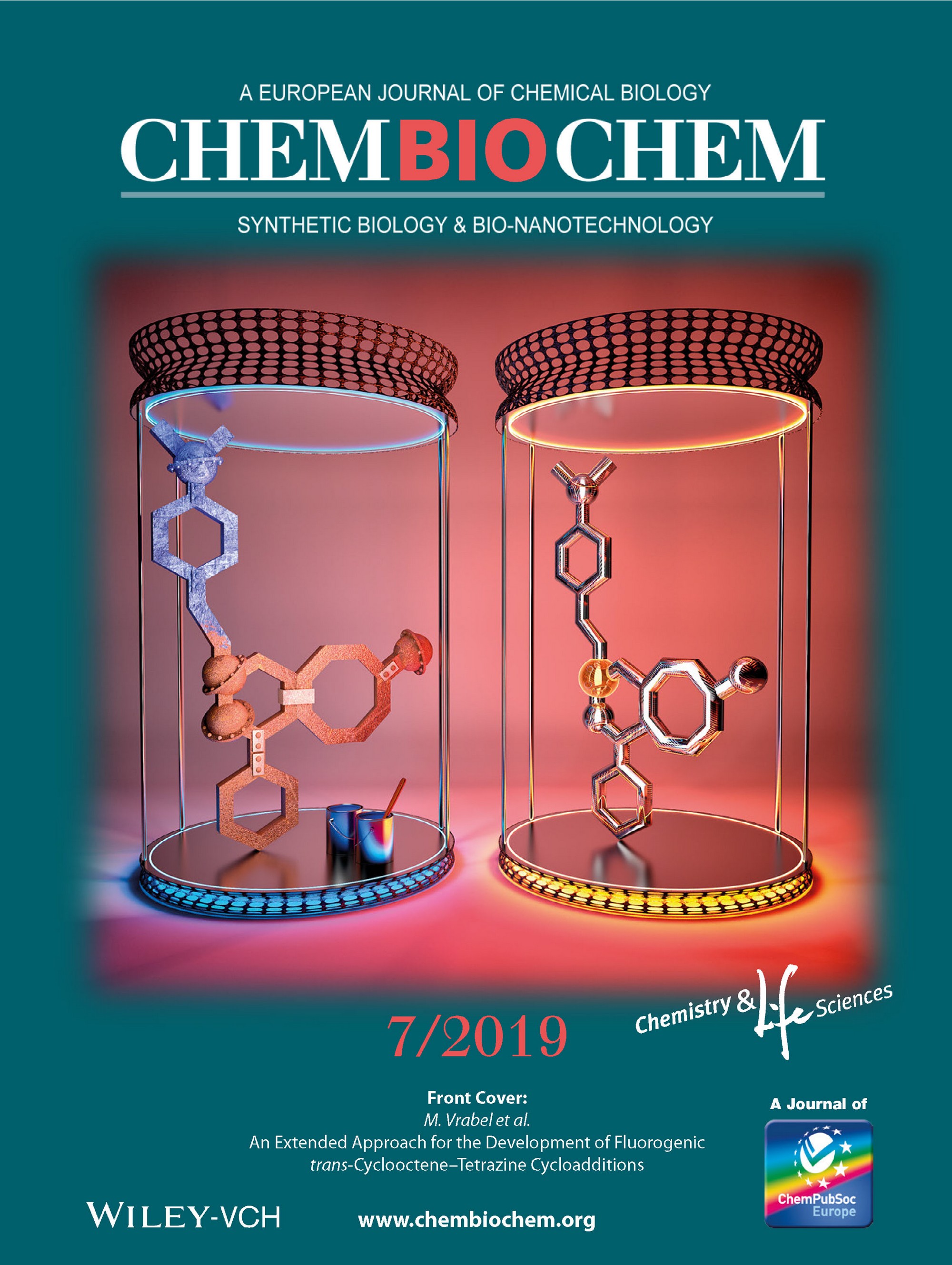
An extended approach for the development of fluorogenic trans-cyclooctene–tetrazine cycloadditions
The front cover picture shows two different dihydropyridazine fluorophores formed in the inverse-electron-demand Diels–Alder reaction of 1,2,4,5-tetrazines with two different trans-cyclooctene (TCO) isomers. A very small structural change in the starting TCO leads to the formation of two different dihydropyridazine tautomers with distinct photophysical properties. The older version of this reaction (blue-emitting tautomer) was extended to various TCO derivatives, thereby providing access to new dyes with improved properties. This fluorogenic bioorthogonal reaction was successfully applied to label cell membranes and intracellular compartments. (Cover art: Tomáš Belloň / IOCB Prague)
- Article: Siegl, S. J.; Galeta, J.; Dzijak, R.; Vázquez, A.; Del Río-Villanueva, M.; Dračínský, M.; Vrabel, M. An Extended Approach for the Development of Fluorogenic trans-Cyclooctene–Tetrazine Cycloadditions. ChemBioChem 2019, 20, 886-890. https://doi.org/10.1002/cbic.201800711
- Cover
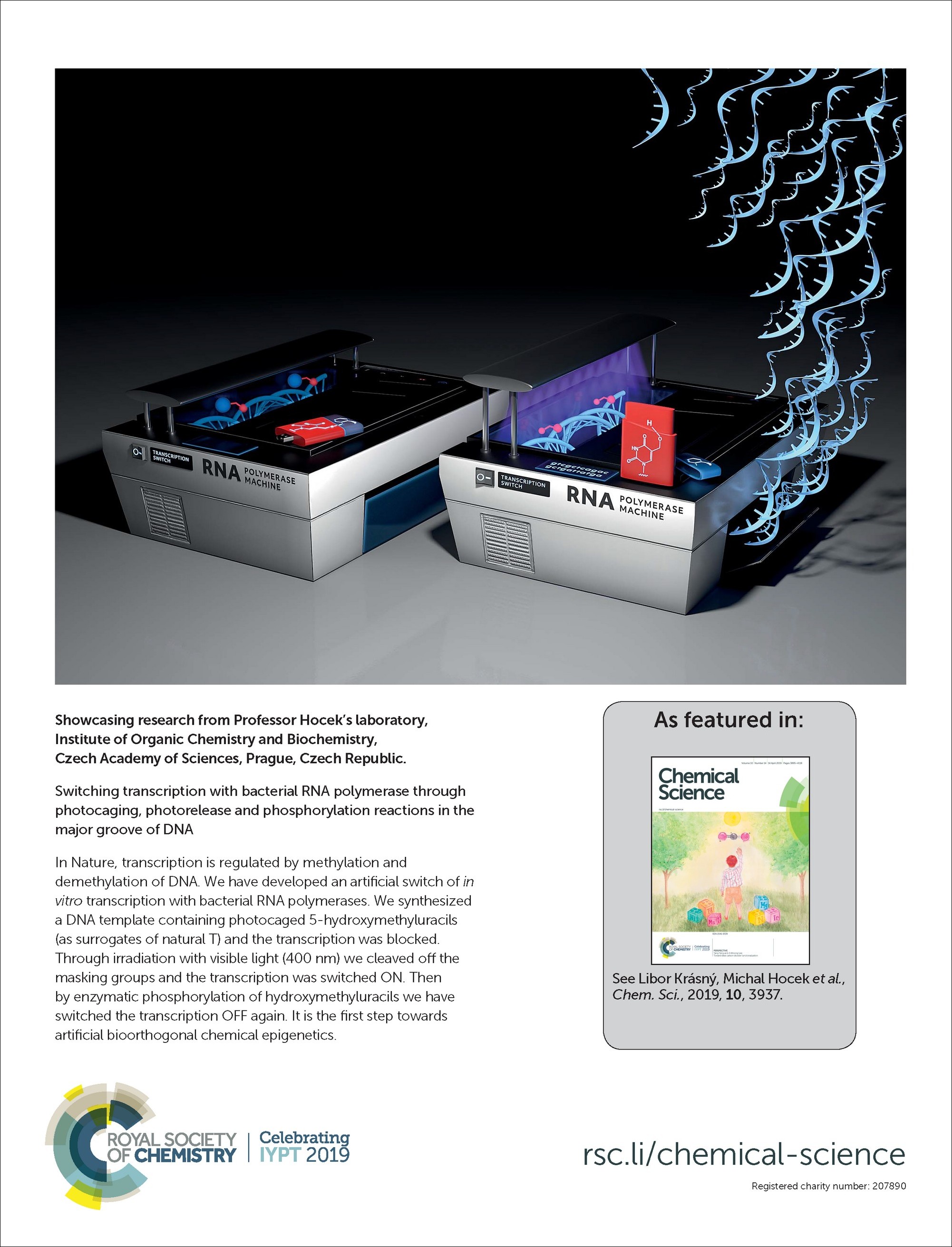
Switching transcription with bacterial RNA polymerase through photocaging, photorelease and phosphorylation reactions in the major groove of DNA
In Nature, transcription is regulated by methylation and demethylation of DNA. We have developed an artificial switch of in vitro transcription with bacterial RNA polymerases. We synthesized a DNA template containing photocaged 5-hydroxymethyluracils (as surrogates of natural T) and the transcription was blocked. Through irradiation with visible light (400 nm) we cleaved off the masking groups and the transcription was switched ON. Then by enzymatic phosphorylation of hydroxymethyluracils we have switched the transcription OFF again. It is the first step towards artificial bioorthogonal chemical epigenetics. (Cover art: Tomáš Belloň / IOCB Prague)
- Article: Vaníková, Z.; Janoušková, M.; Kambová, M.; Krásný, L.; Hocek, M. Switching transcription with bacterial RNA polymerase through photocaging, photorelease and phosphorylation reactions in the major groove of DNA. Chem. Sci. 2019, 10, 3937-3942. https://doi.org/10.1039/C9SC00205G
- Cover
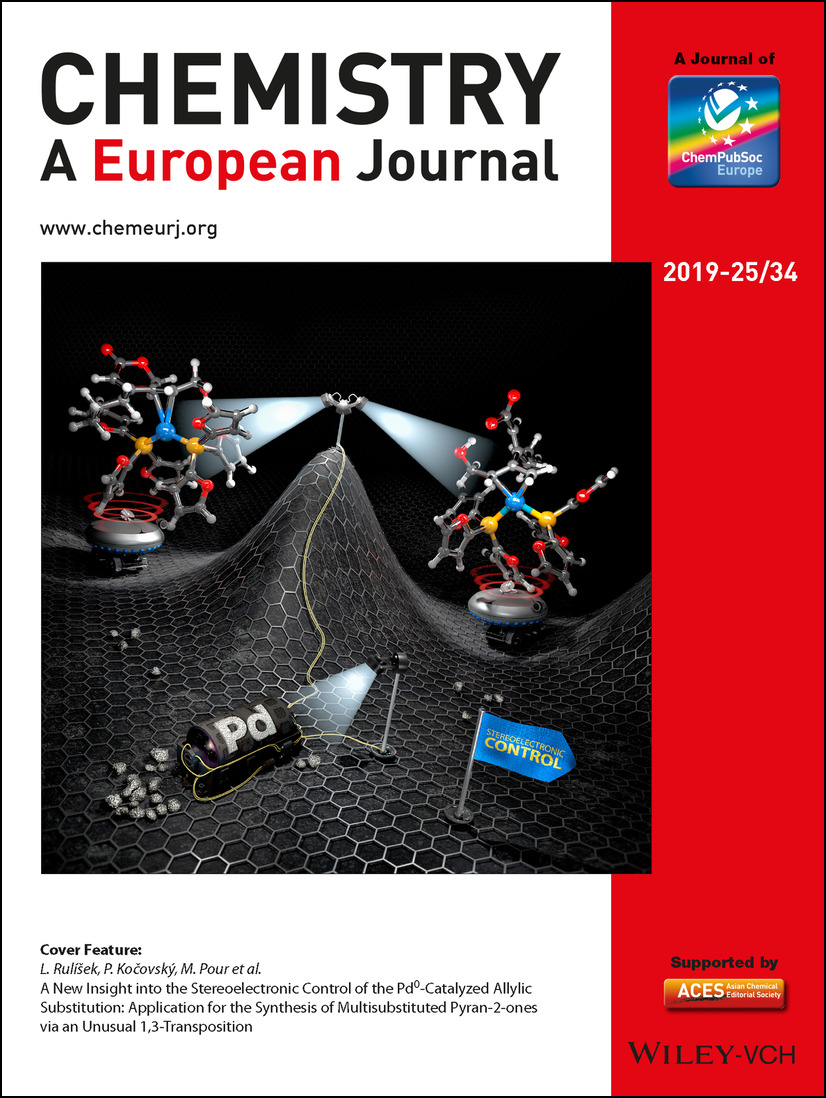
A new insight into the stereoelectronic control of the Pd0-catalyzed allylic substitution: application for the synthesis of multisubstituted pyran-2-ones via an unusual 1,3-transposition
A new insight into Pd-catalyzed allylic substitution shows that it is the pyramidalization of the C−C moiety of the initially formed η2-palladacycle that plays the key role in its conversion into the pivotal η3-complex. Herein, the epoxide-like geometry of the η2-intermediate allows a favorable antiperiplanar alignment of the Pd−C and allylic C−X bonds, so that the reaction is not limited to the substrates with the C−X bond perpendicular to the C=C plane as was previously thought. This is demonstrated by the rearrangement of the nearly planar 4-alkylidene-5,6-dihydropyran-2-ones to 6-substituted-4-methylene-5,6-dihydropyran-2-ones. (Cover art: Tomáš Belloň / IOCB Prague)
- Article: Brůža, Z.; Kratochvíl, J.; Harvey, J. N.; Rulíšek, L.; Nováková, L.; Maříková, J.; Kuneš, J.; Kočovský, P.; Pour, M. Cover Feature: A New Insight into the Stereoelectronic Control of the Pd0-Catalyzed Allylic Substitution: Application for the Synthesis of Multisubstituted Pyran-2-ones via an Unusual 1,3-Transposition (Chem. Eur. J. 34/2019). Chem. Eur. J. 2019, 25, 7955–7955. https://doi.org/10.1002/chem.201900323
- Cover
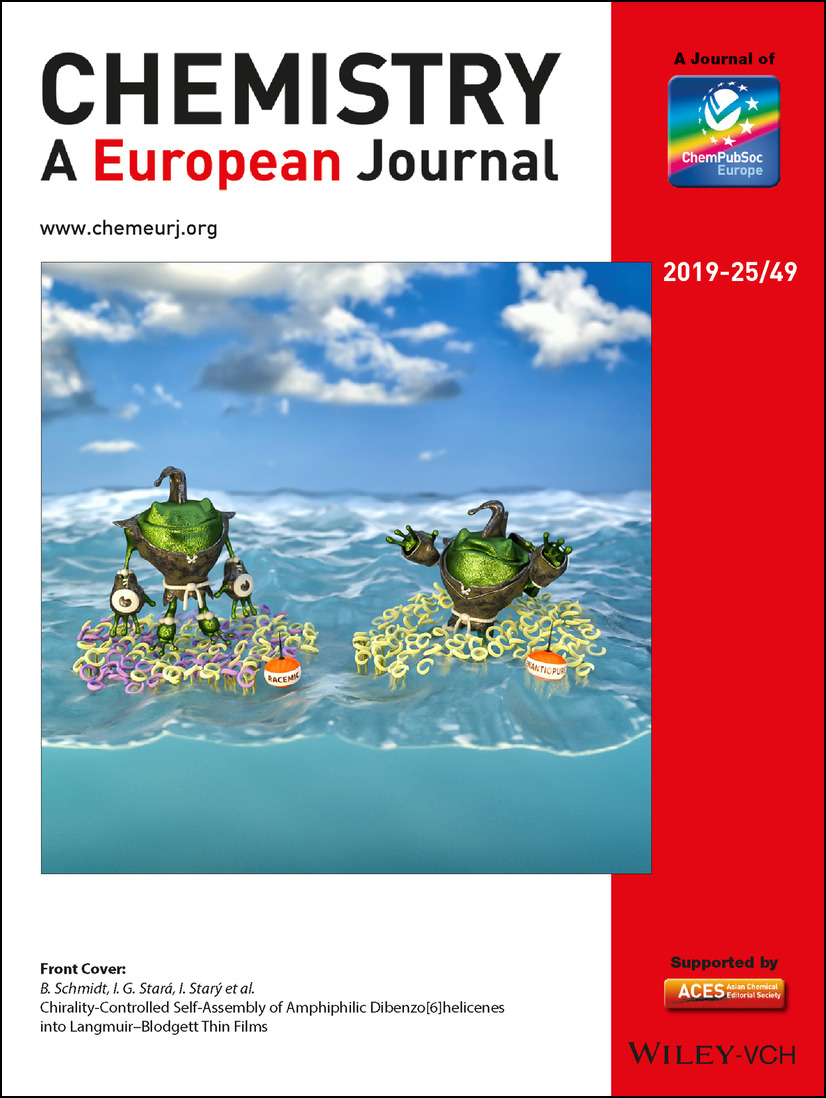
Chirality-controlled self-assembly of amphiphilic dibenzo[6]helicenes into Langmuir–Blodgett thin films
Helicene rafts on water: Amphiphilic derivatives of dibenzo[6]helicene form stable Langmuir layers at the air–water interface. Significant differences can be found in their structure and behavior depending on molecular chirality and the nature of the polar group. Both experiments and molecular dynamics simulations point to the fact that racemic assemblies are more stable than enantiopure ones. (Cover art: Tomáš Belloň / IOCB Prague)
- Article: Holec, J.; Rybáček, J.; Vacek, J.; Karras, M.; Bednárová, L.; Buděšínský, M.; Slušná, M.; Holý, P.; Schmidt, B.; Stará, I. G.; Starý, I. Chirality-Controlled Self-Assembly of Amphiphilic Dibenzo[6]helicenes into Langmuir–Blodgett Thin Films. Chem. Eur. J. 2019, 25, 11494–11502. https://doi.org/10.1002/chem.201901695
- Cover
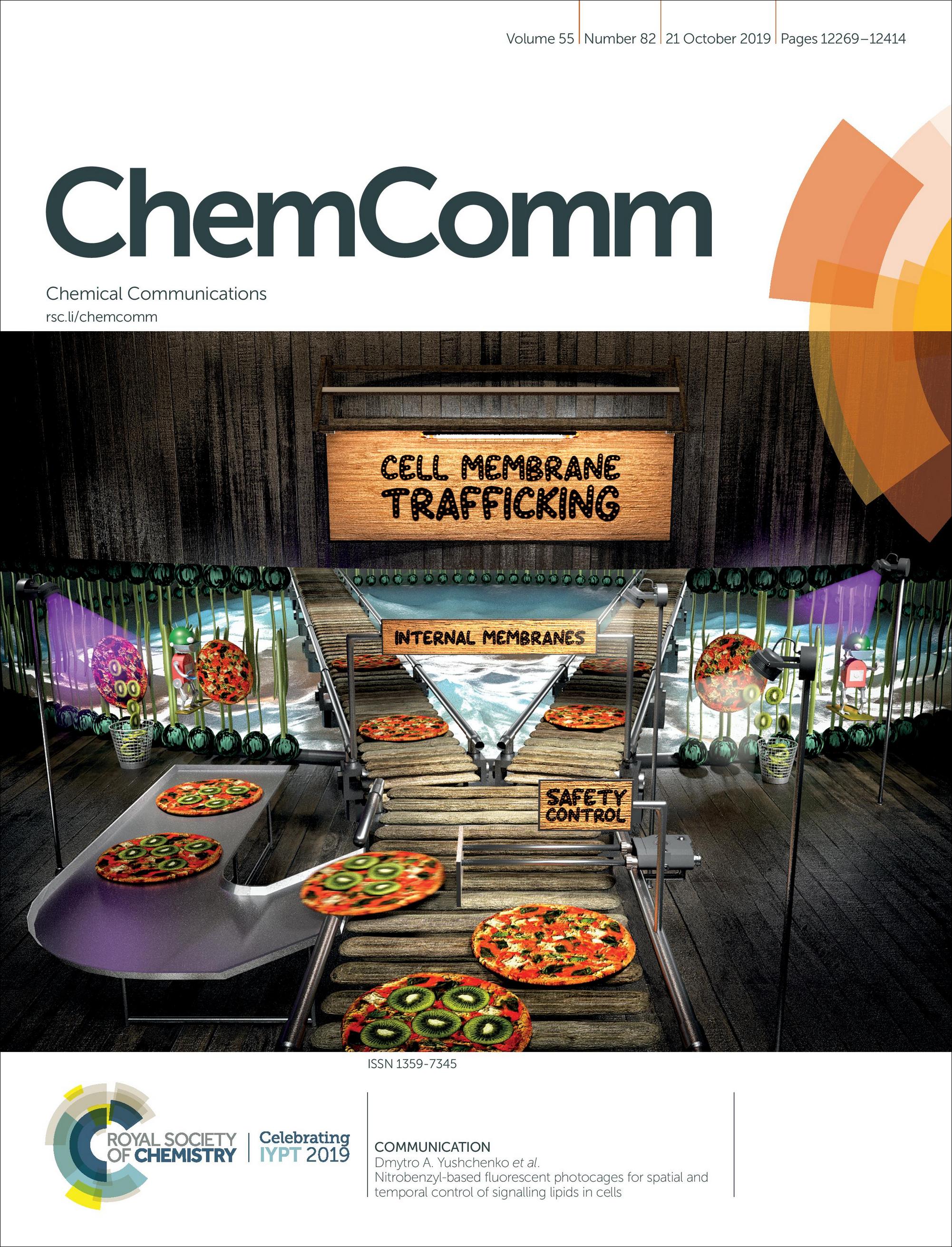
Nitrobenzyl-based fluorescent photocages for spatial and temporal control of signalling lipids in cells
Cover art: Tomáš Belloň / IOCB Prague
- Article: Gaur, P.; Kucherak, O. A.; Ermakova, Y. G.; Shvadchak, V. V.; Yushchenko, D. A. Nitrobenzyl-based fluorescent photocages for spatial and temporal control of signalling lipids in cells. Chem. Commun. 2019, 55, 12288–12291. https://doi.org/10.1039/C9CC05602E
- Cover
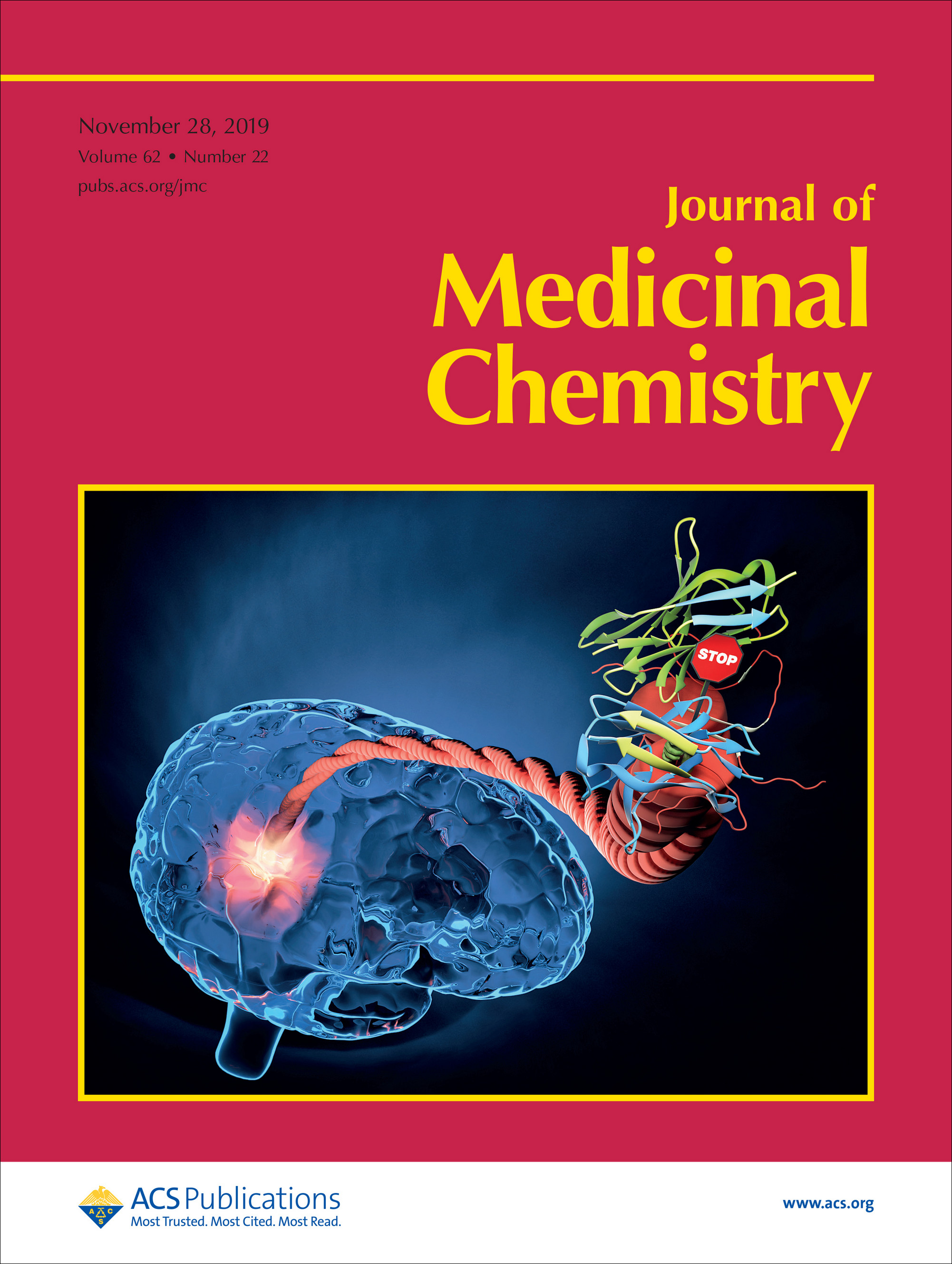
α-synuclein dimers as potent inhibitors of fibrillization
Misfolding of neuronal protein α-synuclein into amyloid fibrils is a key process in the progression of Parkinson's disease. Inhibitors based on α-synuclein dimers selectively bind to fibril ends preventing fibril growth. (Cover art: Tomáš Belloň / IOCB Prague)
- Article: Kyriukha, Y. A.; Afitska, K.; Kurochka, A. S.; Sachan, S.; Galkin, M.; Yushchenko, D. A.; Shvadchak, V. V. α-Synuclein Dimers as Potent Inhibitors of Fibrillization. J. Med. Chem. 2019, 62, 10342–10351. https://doi.org/10.1021/acs.jmedchem.9b01400
- Cover
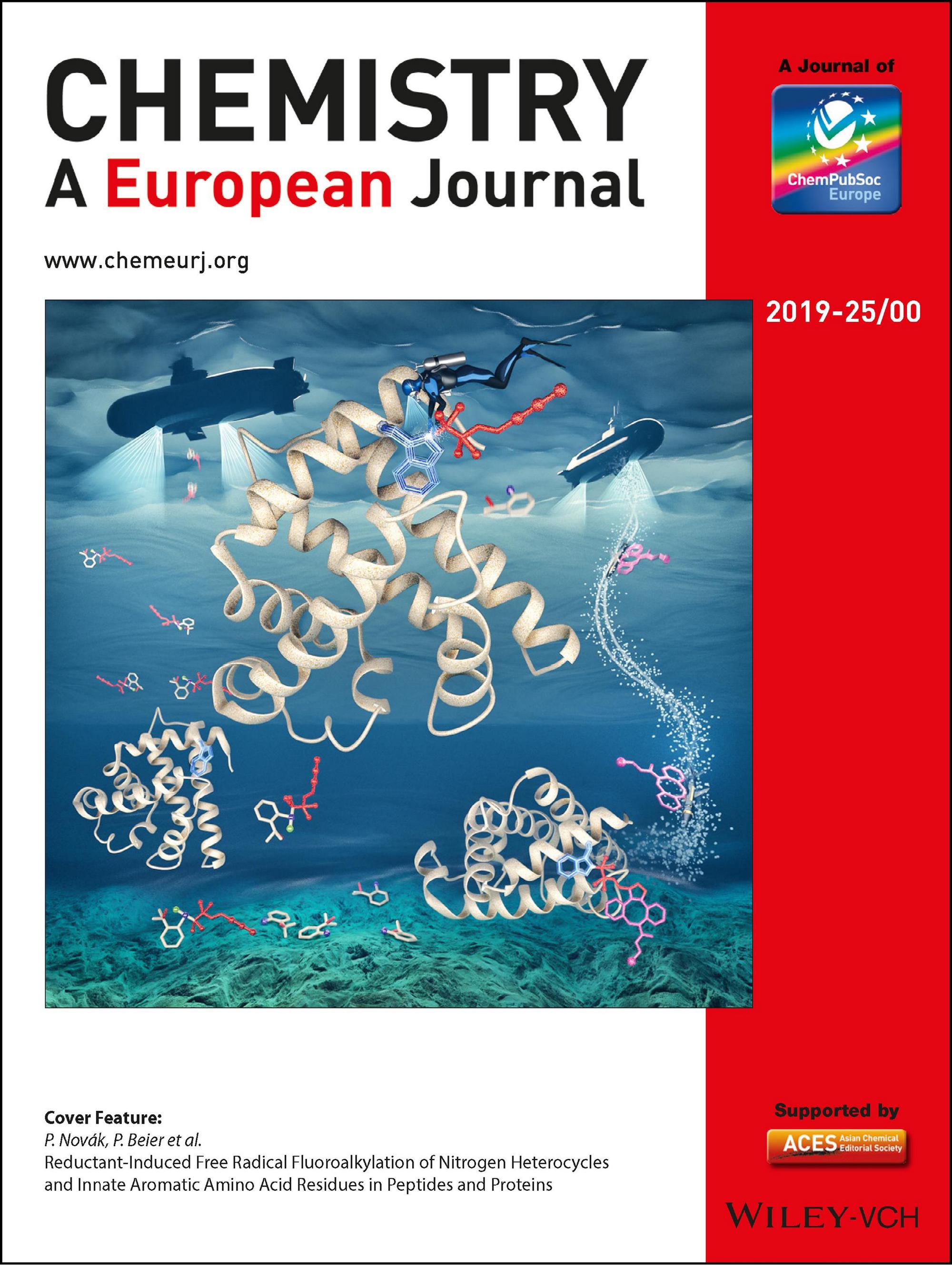
Reductant-induced free radical fluoroalkylation of nitrogen heterocycles and innate aromatic amino acid residues in peptides and proteins
In an underwater sea scene, the key process of protein functionalization on tryptophan is shown. The follow-up click reaction by using the pink reagent carrying a payload delivers the conjugate of choice. Realistic depiction of hypervalent iodine reagents includes the T-shape geometry on the iodine atom and the azido-containing fluoroalkyl group. On the seabed there are side products from the reagent after the reaction with the protein. (Cover art: Tomáš Belloň / IOCB Prague)
- Article: Rahimidashaghoul, K.; Klimánková, I.; Hubálek, M.; Korecký, M.; Chvojka, M.; Pokorný, D.; Matoušek, V.; Fojtík, L.; Kavan, D.; Kukačka, Z.; Novák, P.; Beier, P. Reductant-Induced Free Radical Fluoroalkylation of Nitrogen Heterocycles and Innate Aromatic Amino Acid Residues in Peptides and Proteins. Chem. Eur. J. 2019, 25, 15779–15785. https://doi.org/10.1002/chem.201902944
- Cover



